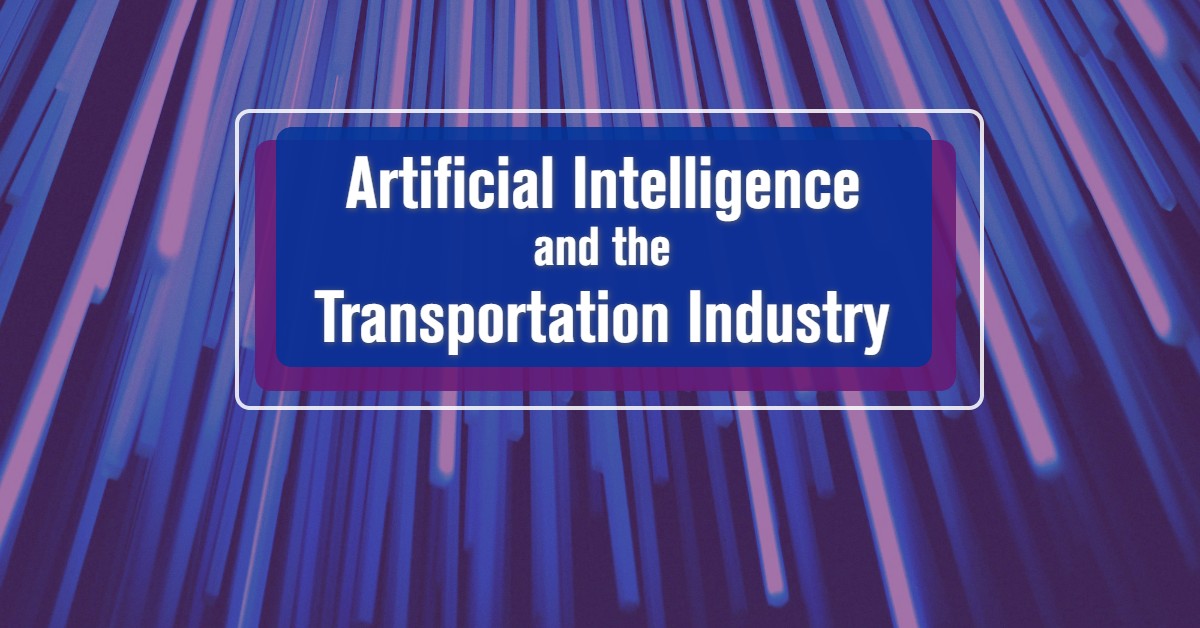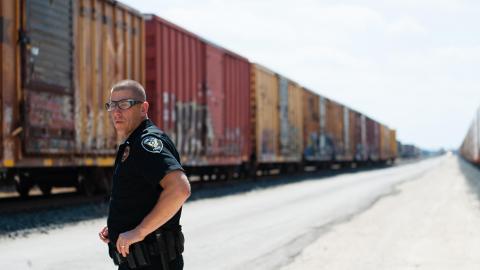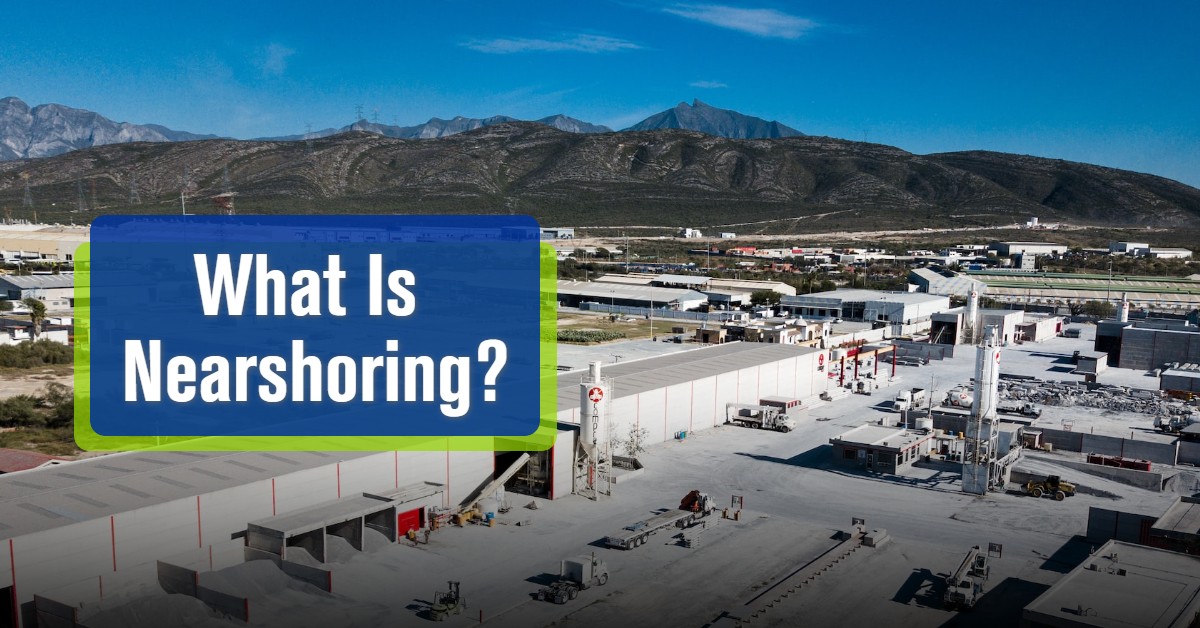The origin of Artificial Intelligence (AI) dates back to 1950 when Alan Turing published his paper, “Computing Machinery and Intelligence,” which discusses how to build intelligent machines and how to test their intelligence. Although the technology has been developing over decades, it’s currently at a flashpoint. According to a new S&P Global Market Intelligence report, generative AI technology (which is only one form of Artificial Intelligence) offerings are forecast to reach $3.7 billion this year and expand to $36 billion by 2028.
Transportation is one industry that is taking advantage of the large leap forward in AI and Machine Learning (ML) technologies. How does the transportation industry currently use AI and ML? Uses include analyzing AI data for sales and customer service functions, logistics and supply chain management, and safety and security. This is just the beginning. More advancements are coming for the future of AI and ML in the transportation industry.
What Is Artificial Intelligence?
Artificial Intelligence is the development of systems to perform tasks that normally require human intelligence. Over the years, the world has worked to understand how to use AI and to determine what the future of AI is.
These AI and technology systems enable computers to perform human-like tasks, like:
- decision-making
- object classification and detection
- speech recognition
- translation
Generative AI is a type of artificial intelligence system capable of generating text, images or other media in response to prompts. By using these artificial intelligence solutions, companies can analyze data to further enable technology innovations.
OpenAI’s ChatGPT is perhaps the most commonly known AI technology. This Generative AI chatbot is based on a Large Language Model (LLM) designed to respond to questions and compose written content, including articles, social media posts, essays, code and emails.
What Is Machine Learning?
Machine Learning is a subset of AI and is the component of AI that enables a system to “learn” and continually refine its interpretation of big data sets. It uses vast volumes of AI data and complex algorithms to enable computers to learn without explicitly being programmed.
If you’ve noticed that recommendations from your streaming service get better the more you watch, that’s machine learning. As you continually put in data (i.e., watch movies or TV shows), machine learning makes it possible to provide better output (i.e., viewing recommendations).
What Is Deep Learning?
Deep Learning is a subset of machine learning that leverages our understanding of how neural networks perform in the human brain to enable smarter results and better decisions.
What Are Examples of Artificial Intelligence in the Transportation Industry?
Here are three ways the transportation and freight shipping industries use AI:
- Sales and customer service functions: With the help of ChatGPT, transportation companies can provide their customers with personalized and responsive service. For instance, at a railroad, employees can answer customer queries with disparate data pulled for them into one place in real-time, such as providing information on exceptions, schedules, pricing and routes. Using AI, humans can take Customer Experience in freight shipping and transportation to the next level.
- Logistics and supply chain management: Leveraging AI in their technology solutions, transportation companies can optimize their supply chain operations and improve efficiency. It can also be used to help predict demand, optimize routes and even predict maintenance requirements, allowing us to have a wealth of data at our fingertips and making us more predictive.
- Safety and security: AI can be used to monitor shipping traffic patterns, assist with identifying potential hazards and help detect suspicious activity. This enables transportation companies to take proactive measures and ensure the safety of their freight or passengers and assets.
How Will the Transportation Industry Use AI in the Future?
Untold opportunities lay ahead for the transportation industry’s use of AI, and top tech leaders plan on utilizing the benefits that come from responsible AI solutions. Rahul Jalali, Executive Vice President and Chief Information Officer for Union Pacific Railroad, summarizes where the railroad is headed in two key points.
- "Augmenting human capabilities with machine intelligence’ — We will leverage AI to run predictive and streamlined operations, prepare for business growth, and drive us toward a customer-centric future. AI should be used to aid humans in making decisions that provide better customer service – such as functions in Marketing and Sales — or optimization of operations out in the field.”
- "Specifically, we need to look at augmenting Digital Transformation efforts with Data Science, Operations Research and Simulation practices to improve operations through technology innovation that drives competitive advantage.”
Jalili emphasizes the importance of ethical AI use and data security moving forward.
“We need to take a responsible approach to ensure there is minimum bias in the AI we are implementing. Much will be determined in the coming years by way of government and industry regulation, but we can start by building responsible AI by design – solutions that are safe, trustworthy, ethical and transparent. We will use Large Language Models (LLMs), which are essentially black boxes, to protect intellectual property. We will send in data; it does what it does; and the output belongs to us,” said Jalali said. “Ultimately, AI will empower our teams to make better and smarter decisions thereby making us more efficient and productive and creating opportunities for growth.”
Learn More
Railroads have been shipping freight for more than 160 years. Although rail shipping is a longstanding industry, railroads continue to find new ways to improve safety, operations, and service to their customers.
If you’d like to learn more about shipping by rail, answer a few questions and an expert will be in touch.
Related Articles
- What Does “Digital Customer Experience” Mean for Transportation?
- How to Improve the B2B Customer Experience
- Caring for More than Freight: Customer Experience and the Railroad
- What Is “Driver Experience” and Why Does it Matter for Freight Shipping?
- Transportation Modes Revealed: A Comprehensive Look
- What Is Transloading & How Does It Expand Freight Shipping Options?
- How to Use Carbon Calculators to Reduce Transportation Emissions
- How Do Logistics Consultants Benefit Supply Chains?









